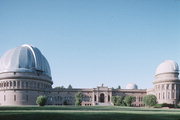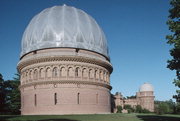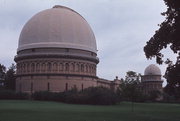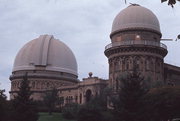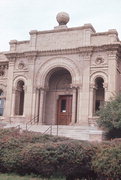| Additional Information: | A 'site file' exists for this property. It contains additional information such as correspondence, newspaper clippings, or historical information. It is a public record and may be viewed in person at the Wisconsin Historical Society, State Historic Preservation Office.
When completed in 1897, Yerkes Observatory was the world’s most modern observatory. Earlier observatories simply housed a telescope and an observer, but University of Chicago astronomer George Ellery Hale envisioned a facility that combined observational domes with a scientific laboratory containing mechanical, electronic, engineering, photography, and optics workshops, as well as a research library. This site was then distant enough from the lights of Chicago to assure dark skies but close enough to the city to be accessible to the university’s faculty and students.
The observatory attracted the distinguished astronomers of North America. Here, Hale founded the field of astrophysics, Sherburne Burnham cataloged double stars, Frank Schlesinger pioneered measuring the distances of stars with astrophotography, and Gerard Peter Kuiper recorded important discoveries about the satellites ringing Saturn, Uranus, and Neptune.
Cobb, a prominent Chicago architect, designed the palatial building from plans drawn by Hale, who had studied observatory designs in California and Germany. The long axis is anchored at one end by the great observatory dome and crossed near the opposite end by a shorter axis, whose extremities terminate in a smaller observatory tower and a domed meridian room. Exuberant terracotta enriches the brown brick walls to create the effect of stone construction. Drawing on a combination of Romanesque and Renaissance influences, Cobb produced a fantastic round-arched composition. At the center of the main axis is a projecting, arched entry portal. Round arches continue in the rhythm of windows, joined in sets of three, which span the length of the central axis and encircle the domed towers. Notice especially the riot of ornamentation: classical moldings, griffins, dolphins, scallop shells, owls, signs of the zodiac, celestial motifs, images from classical mythology, and caricatures of University of Chicago officials.
The great dome, 90 feet in diameter, opens by moving on 26 wheels to reveal an 11-foot-wide aperture from which to explore the sky. Stainless steel replaced thin metal sheathing in 1975. The 40-inch refracting telescope, weighing 20 tons, is the largest of its type ever built. Mounted on a cast iron column atop a massive brick pier, it reaches 61 feet above ground level. The floor underneath the instrument can be raised within a range of 23 feet, allowing astronomers to adjust the telescope’s angle to view stars near their zenith. Warner and Swasey designed the dome’s structure and the telescope's housing, and Alvan G. Clark of Cambridge, Massachusetts, ground the lens. |
|---|

